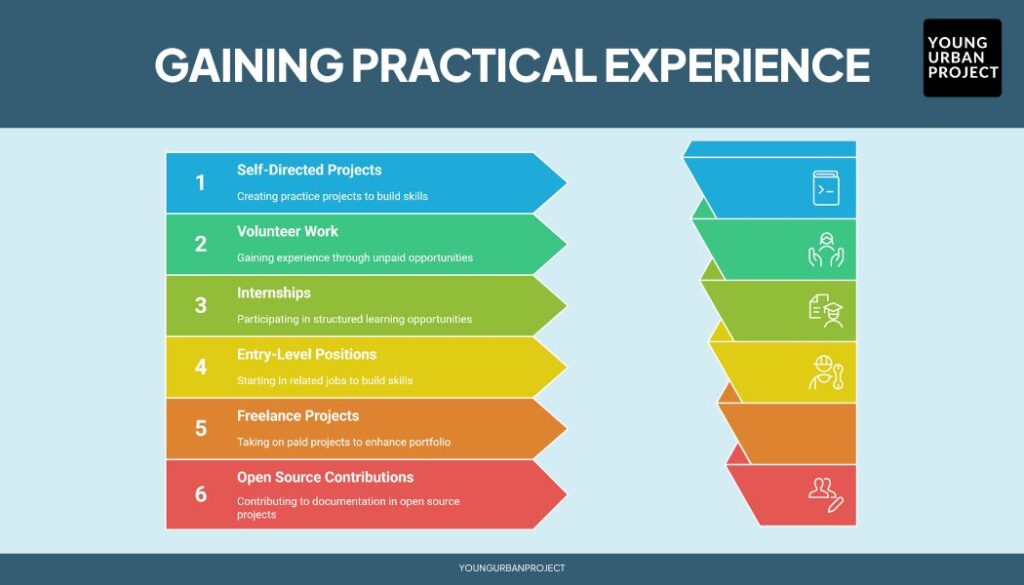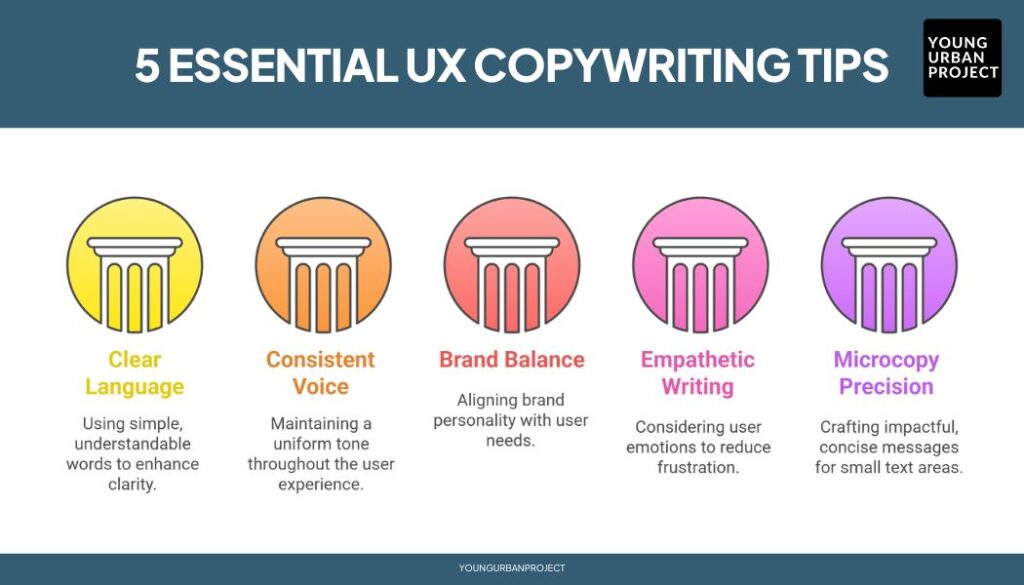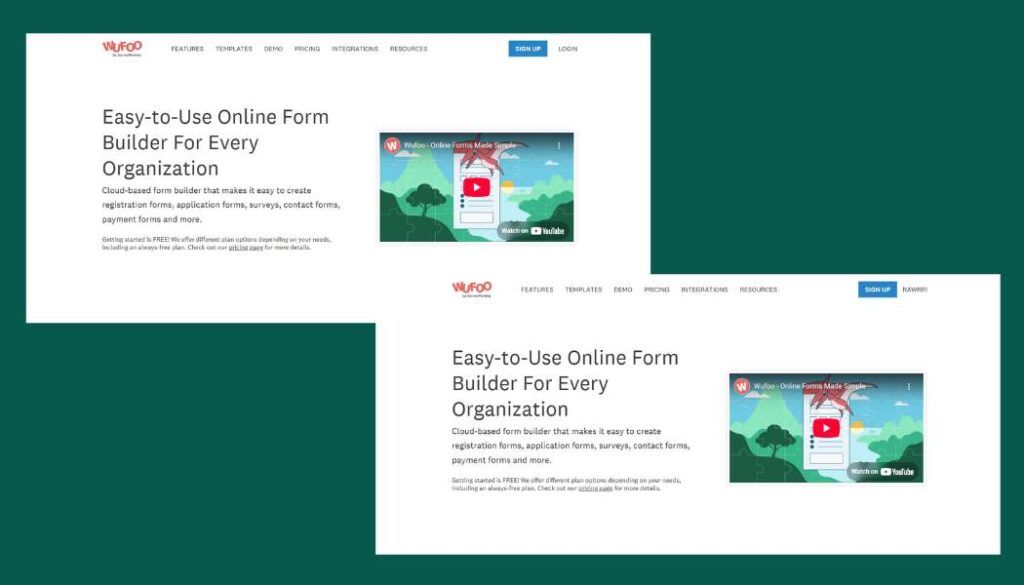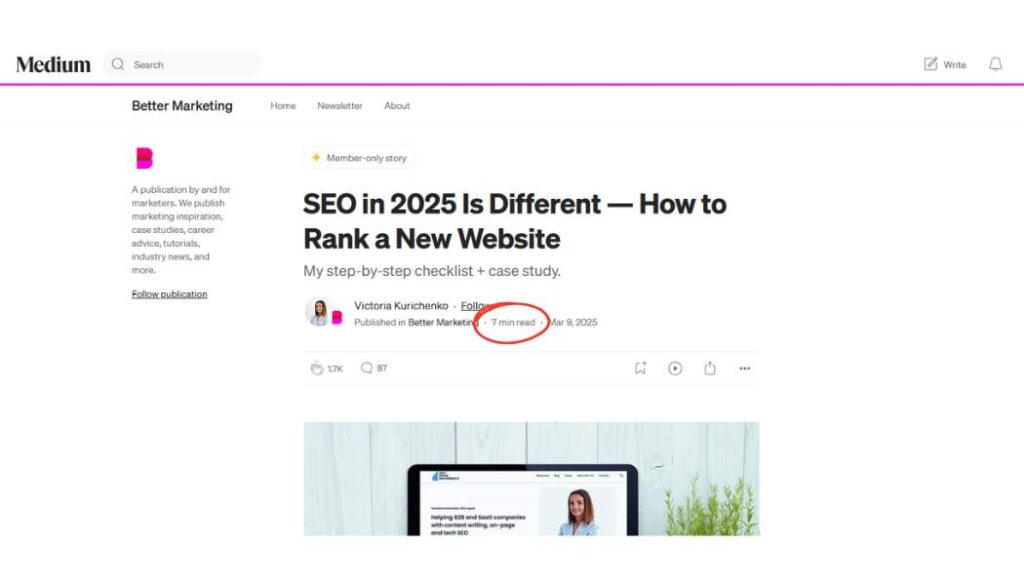Imagine visiting a website, but instead of clear instructions, you’re met with confusing buttons and vague messages. Frustrating, right? That’s where UX copywriting comes in—it’s the secret ingredient that makes digital experiences smooth, intuitive, and user-friendly.
Table of Contents
UX copywriting isn’t about selling—it’s about guiding. It helps users navigate apps, websites, and products effortlessly with clear and helpful words. Whether it’s a simple “Sign Up” button, a friendly error message, or a reassuring confirmation text, UX writing shapes how people interact with digital spaces.
In this blog, we’ll break down what is UX copywriting, how it differs from traditional copywriting, and how you can become a great UX writer. Plus, we’ll share expert tips and real-world examples to help you master the craft.
What is User Experience (UX)?
User Experience (UX) is how a person feels when using a product, app, or website. It’s not just about looks—it’s about ease, speed, and whether the experience feels frustrating or effortless. Good UX means buttons are where you expect them, tasks take few clicks, and nothing leaves you confused.
How does UX influence content and user interactions?
Words shape UX just as much as design. If a button says “Proceed” instead of “Next,” it can change how confidently you click. If an error message blames you (“You entered the wrong password”), it feels harsh—but a friendly fix (“Wrong password—try again or reset it”) keeps users calm.
Great UX writing removes guesswork. It answers questions before they’re asked:
- “Where’s the search bar?” → Clear label: “Find products…”
- “Did my order go through?” → Confirmation: “Success! Your order is placed.”
In short, UX writing turns clunky interactions into smooth conversations. Every word either helps or hurts—so choosing the right ones matters.
What is UX Copywriting?
Ever clicked a button and instantly doubted if it worked? Or gotten stuck because “Terminate Account” sounded scarier than “Delete Profile”? That’s exactly what bad UX writing feels like—and why good UX copywriting matters.
UX copywriting is the practice of crafting clear, purposeful text that helps users navigate digital products effortlessly. It’s the words in buttons, error messages, menus, and instructions that guide people—without confusion or frustration.
Unlike traditional copywriting (which sells products or ideas), UX writing solves problems.
It turns:
- “Error 404” → “Page not found. Here’s how to get back on track.”
- “Submit” → “Send message (we’ll reply in 24 hours)”
- “Sign Up” → “Get started—it’s free!”
A UX copywriter doesn’t just write words; they design conversations between users and technology. Their goal? Making every tap, swipe, or click feel intuitive—like the product just gets you.
Think of it this way: if UI is the body of a digital product, UX copywriting is its voice—and it should always speak the user’s language.
Also Read: What Is Copywriting? The Ultimate Guide to Copywriting
How to Become a UX Copywriter
Becoming a UX copywriter requires a specific set of skills and experiences that blend writing ability with user-centered thinking. Here’s how you can start and grow in this field:
Essential Skills for UX Writing

1. Clarity
Good UX writers can explain complex ideas in simple terms. They cut unnecessary words and avoid jargon. Every sentence they write has a clear purpose and helps users complete tasks.
2. Empathy
Understanding how users feel when using a product is crucial. UX writers must put themselves in users’ shoes to write helpful, friendly copy that addresses real needs and pain points.
3. Collaboration
UX writers rarely work alone. They must work well with designers, developers, product managers, and marketers. Being open to feedback and able to explain your writing choices is important.
4. Research Skills
Great UX copy is based on evidence, not guesses. Learning how to conduct user research, analyze data, and test your copy with real users will make your writing more effective.
5. Technical Understanding
You don’t need to code, but understanding how digital products work helps you write better instructions and error messages. Basic knowledge of design principles and user interfaces is valuable.
Also Read: What is Conversion Copywriting
Building a Strong Portfolio
1. Focus on Real Problems
Create sample projects that solve actual user problems. Redesign confusing website flows or app instructions you’ve encountered.
2. Show Your Process
Don’t just display the final copy. Include your thinking: What problem were you solving? What research did you do? Why did you choose specific words?
3. Include Different Types of UX Copy
Show range in your portfolio with examples of:
- Onboarding flows
- Error messages
- Form fields
- Button text
- Help documentation
- Empty states
Also Read: 16 Types of Copywriting Every Marketer Must Know
4. Before and After Examples
Take existing digital products with poor copy and improve them. Show both versions to demonstrate your impact.
Gaining Practical Experience

1. Self-Directed Projects
Creating your own practice projects helps build experience when you’re just starting out. Pick an app or website you use often, document all the text in it, and create improved versions. Write up your thinking for each change and put together a case study for your portfolio. You might redesign the copy for a food delivery app, focusing on making the ordering process faster and clearer for users.
2. Volunteer Work
Real-world experience is valuable, even if it’s unpaid at first. Help local small businesses improve their websites or offer your skills to nonprofits. These organizations often need better digital content but can’t afford professional help. You could help a local animal shelter improve their pet adoption website with clearer instructions and more emotional language that connects with potential pet adopters.
3. Internships
Looking for internships specifically in UX writing or content design provides structured learning opportunities. Even general copywriting jobs at tech companies can provide useful experience if you show interest in product writing. Be prepared to show your portfolio during interviews and ask about mentorship opportunities. The hands-on experience from an internship helps bridge the gap between theory and practice.
4. Entry-Level Positions
Starting with related jobs can lead to UX writing roles over time. Positions like content specialist, junior copywriter, or technical writer build relevant skills that transfer to UX writing. In these roles, ask to help with product copy whenever possible to build experience that matches your career goals. Even customer support roles teach you about common user problems, which is valuable knowledge for UX writing.
Also Read: Copywriting vs Content Writing: What’s the Difference?
5. Freelance Projects
Freelance work allows you to build experience while getting paid. Create profiles on freelance websites and start with small, affordable projects to build your portfolio. Directly email small businesses with specific suggestions for improving their website copy. You might offer to rewrite the signup process for a small business website for an affordable price, then ask for a testimonial when they’re happy with your work.
6. Open Source Contributions
Open source software projects often need help with documentation and user interfaces. Find projects and look for issues labeled “documentation” or “copy.” Help rewrite confusing instructions or improve error messages. This gives you real experience working with technical teams and creates public work examples you can show potential employers.
Learning Resources
1. Books
Read books specifically about UX writing like “Strategic Writing for UX” by Torrey Podmajersky or “Microcopy” by Kinneret Yifrah.
2. Courses
Online UX Copywriting courses allow you to learn at your own pace and often include practice assignments. Many courses also provide certificates that you can add to your resume. These structured learning paths help ensure you’re covering all the important aspects of UX writing.
3. Community
Join UX writing communities on LinkedIn, Slack channels, or Facebook groups to learn from others and find opportunities.
By combining these skills, portfolio pieces, and practical experiences, you’ll be well on your way to becoming a UX copywriter who creates clear, helpful, and human-centered digital experiences.
Also Read: LinkedIn X-Ray Search: The Hidden LinkedIn
5 Essential UX Copywriting Tips for a Better User Experience

Tip 1: Use clear, simple language
Ditch fancy words. Write like you’re helping a friend. “Get started” works better than “Commence onboarding.” If a 10-year-old wouldn’t understand it, rewrite it. Tech terms confuse most users. Say “Sign in” instead of “Authenticate.” Simple words get better results every time.
Tip 2: Keep voice consistent everywhere
Your app shouldn’t sound like a robot in errors but a friend in menus. Pick one style and stick to it. If you’re casual, stay casual in buttons, errors, and help text. Switching tones makes users feel lost. Consistency builds trust.
Tip 3: Balance brand and user needs
Your words should sound like your brand but serve users first. A bank app can be professional but still say “We couldn’t find that account” instead of “Account retrieval failure.” Brand personality matters, but clarity matters more.
Tip 4: Practice Empathetic Writing
Think about user stress points. “Your session expired” feels blaming. “For security, we logged you out” explains why. Good UX writing removes frustration. Always ask: “How would this make someone feel?”
Tip 5: Perfect your microcopy
Tiny words make big differences. “Continue” works better than “Proceed.” Error messages should help, not confuse. Loading text should reassure (“Almost done!”) not just state facts (“Processing”). Every small phrase should guide users forward.
UX Writing vs. Traditional Copywriting: What’s the Difference?
Both UX writing and traditional copywriting involve words, but they serve different purposes. Here’s a comparison:
| Aspect | UX Writing | Traditional Copywriting |
| Goal | Helps users navigate apps, websites, and products smoothly. | Persuades people to buy a product or service. |
| Focus | Clarity, usability, and guidance. | Selling, storytelling, and branding. |
| Tone | Clear, simple, and direct. | Can be creative, emotional, or persuasive. |
| Examples | Buttons, error messages, instructions, onboarding text. | Ads, product descriptions, social media captions. |
| Success Metric | Easy navigation, user satisfaction, fewer errors. | Increased sales, clicks, and conversions. |
Real-World UX Writing Examples
1. Wufoo’s Playful Login Prompt

Wufoo, an online form builder, adds a touch of delight to its login experience. When users hover over the login button, it playfully displays “Rawrr!” This unexpected, friendly interaction adds personality to the interface, making the user experience more enjoyable and memorable.
2. Bumble’s Inclusive Gender Options
The dating app Bumble demonstrates inclusivity through its UX writing by offering users three primary gender options: woman, man, and nonbinary. Additionally, it provides a comprehensive list of more specific genders, allowing users to select the identity that best represents them. This approach ensures that all users feel seen and respected.
3. Mailchimp’s Humorous Error Messages
Mailchimp, an email marketing platform, uses humor in its error messages to ease user frustration. For instance, if a user attempts to send a campaign without a subject line, Mailchimp responds with, “Oops, you need a subject line!” This lighthearted approach helps maintain a positive user experience, even when issues arise.
Also Read: What is Email Copywriting: Complete Guide
4. Medium’s Reading Time Estimate

Medium enhances user engagement by providing an estimated reading time for each article. Phrases like “5 min read” help users decide whether they have enough time to read the content, setting clear expectations and improving overall satisfaction.
5. Slack’s Friendly Onboarding Messages
Slack, a collaboration tool, uses conversational and friendly language during its onboarding process. Messages like “You’re here! The team is excited to get started with you” create a welcoming atmosphere, encouraging user engagement from the outset.
Conclusion
In the end, UX copywriting is about making digital products easy and pleasant to use. It’s the helpful words that guide users through websites and apps without confusion. Unlike regular copywriting which tries to sell things, UX writing focuses on helping people complete tasks smoothly.
To be good at UX writing, you need to write clearly, understand what users want, and work well with designers and developers. The best UX writers create text that feels natural and helpful, not robotic or confusing.
As more of our lives move online, clear and friendly digital guidance becomes even more important. Whether you’re building a website, designing an app, or improving a product, remember that the right words can make all the difference in how people experience technology.
FAQ: What is UX Copywriting
1. Who is responsible for UX writing in a company?
Usually a UX writer, content designer, or product copywriter. In smaller teams, product managers or designers may handle it. Some companies spread the work across marketing and dev teams. Good UX writing needs dedicated focus—when everyone “kind of” does it, consistency suffers.
2. How do you start a career in UX copywriting?
1. Learn the basics (read copywriting books like Microcopy by Kinneret Yifrah).
2. Take a UX writing course
3. Practice rewriting the bad UX you see in apps.
4. Build a portfolio with 3-4 strong examples.
5. Apply for internships or junior roles.
6. Freelance gigs help too—many start by fixing clunky copy for small businesses.
3. Can you learn UX writing on your own?
Yes. Study real interfaces, take free courses, and practice daily. The best teachers are existing apps—analyze what works. Build a portfolio with spec work (redesign bad microcopy). Many top UX writers are self-taught. What matters is showing you can solve real problems with words.
4. Will AI replace UX writers?
No. AI can generate generic text, but it lacks human judgment for tone, empathy, and subtle context. UX writing isn’t just words—it’s solving puzzles about how people think. The best microcopy comes from understanding real user struggles. AI may help with drafts, but humans will always refine it.

